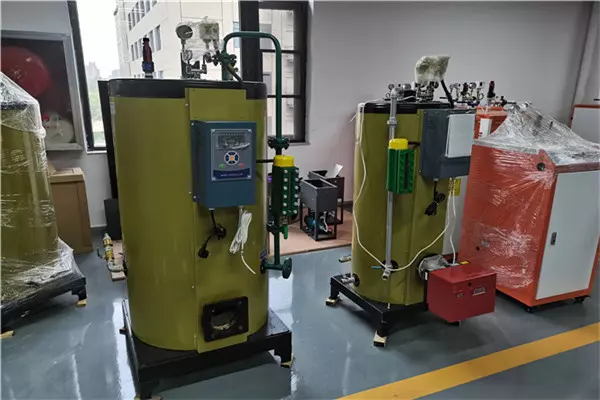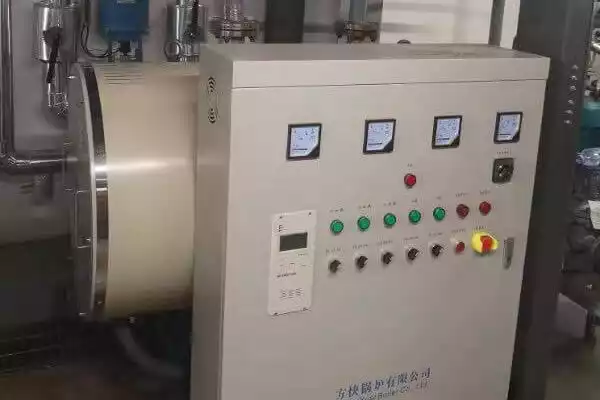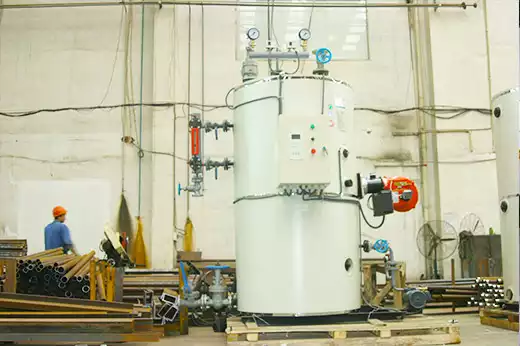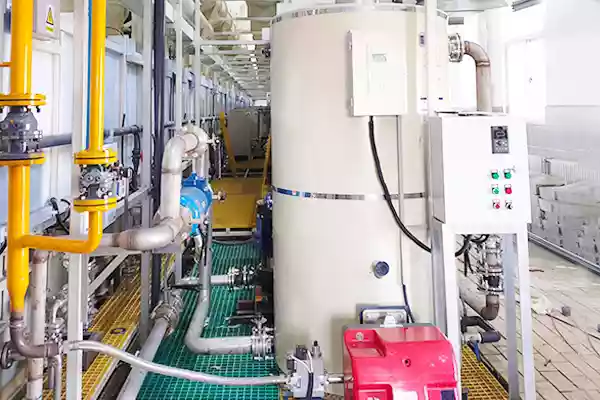
Giá mua máy xông hơi khoảng $2,580 – 1,2500, tùy thuộc vào kích thước, người mẫu, thương hiệu, và các yếu tố khác của máy phát điện. Máy phát điện hơi nước được sử dụng để sản xuất xử lý hơi nước trong các ngành công nghiệp như hóa chất, hóa dầu, nhà máy điện, và nhà máy lọc dầu. Chúng tạo ra nhiệt và hơi nước, which is distributed throughout the room through a network of pipes. They come in different sizes and shapes, but they all work in the same way. trong bài viết này, we’ll explain how generators work and how to choose one for your home or business.
What is steam generator?
A steam generator is a device that produces steam, which can be used to heat water or in some cases produce electricity. The steam generated by it may be used in many different industries, including power generation and heating. Trong vài trường hợp, the steam is produced for its own sake; in others, it’s used to produce electricity from natural gas or other fuels. In many cases, these devices will also be referred to as boilers. They are used in many different industries, including:
- Power plants
- Chemical manufacturing facilities
- Biotechnology facilities
Steam boiler systems use either combustion or heat transfer (usually from another source) to create steam. The generated heat can then be used for various purposes. Boilers may provide hot water for residential or commercial use; chúng có thể được sử dụng trong các nhà máy điện để sản xuất điện, và chúng thậm chí có thể là một phần của quy trình sản xuất công nghiệp để nấu chảy kim loại hoặc bảo dưỡng lốp cao su (Trong số những thứ khác).
nguyên tắc làm việc.
Máy tạo hơi nước được sử dụng để tạo ra hơi nước ở nhiệt độ cao từ nước. Hơi nước được tạo ra bằng cách đun nóng nước trong bình chứa kín, làm cho các phân tử nước di chuyển nhanh hơn và va chạm với nhau thường xuyên hơn. Điều này làm tăng động năng của chúng, khiến chúng vỡ ra thành nhiều mảnh nhỏ hơn. These smaller pieces then combine with oxygen molecules in the air around them and form tiny bubbles of pure vapor (i.e., steam).
Typically, the process begins with water being heated by burning fossil fuels like coal or oil, which are then converted into pressurized gas that’s passed through a series of pipes called “tubes” (these tubes can be made out of metal or plastic). The resulting high pressure allows for more efficient heat transfer from one area to another—in this case, từ hộp cứu hỏa nơi nhiên liệu cháy sang một buồng khác nơi chứa nước.
Tuổi thọ.
Tuổi thọ của máy xông hơi phụ thuộc vào tần suất sử dụng, tần suất nó được làm sạch và bảo trì, và nó được duy trì tốt như thế nào.
For low-pressure unit or ones that do not return condensate to the boiler, rằng tuổi thọ có thể được kéo dài thêm nhiều như 5 năm. Tuổi thọ điển hình của một máy tạo hơi nước cao áp với một hệ thống hồi lưu nước ngưng sẽ ở khoảng 10 năm.
Nếu bạn sử dụng máy phát điện thường xuyên, đơn vị nên kéo dài giữa 5 Và 10 năm. Khi bạn sử dụng sản phẩm ít thường xuyên hơn, tuổi thọ sẽ được kéo dài đến nhiều như 15 năm. Bảo trì máy phát điện của bạn đúng cách cũng có thể tăng tuổi thọ của nó lên đến 50%.
ưu & Nhược điểm.
ưu:
- Máy tạo hơi nước hiệu quả hơn nồi hơi. Điều này có nghĩa là chúng tạo ra mức nhiệt cao hơn với chi phí thấp hơn, khiến chúng trở thành lựa chọn tuyệt vời cho không gian thương mại hoặc gia đình đông người. Nếu bạn có một nhà máy chạy bằng hơi nước, nó sẽ chạy ở 100% hiệu quả mọi lúc, while a boiler can only achieve that level of efficiency when there’s enough demand for hot water.
- They don’t require electricity to run—just natural gas or propane fuel. This makes them ideal for remote locations where there isn’t access to electricity or as backup sources in case of an outage.
- Steam generators are more energy efficient than boilers, as you can use more steam per pound of water.
- They’re also smaller and lighter than boilers and do not require a boiler room to be installed in your home.
- The system is easy to install, making it ideal for DIY-ers who have some experience with plumbing projects but not much plumbing experience.
Nhược điểm
- Steam generators cost about $4–5 per hour of heat, depending on the size and brand of your generator unit. Generators must be kept clean and serviced regularly to ensure they’re operating safely and efficiently. You may have difficulty finding technicians trained on how they work (although this is becoming less true as more people use these types of systems).
What are steam generators used for?
Steam generators are used in power plants, manufacturing facilities, food and beverage production plants, chemical manufacturing operations, pharmaceutical manufacturing facilities, and other industrial applications. Industrial steam generators can be found in many places where heat is needed for processing or generating power.
In power plants, generators are used to convert the heat of burning fossil fuels into electricity.
In manufacturing facilities, they are used to produce high-pressure steam that is injected into a process chamber (for instance: injection molding machines) to provide heating and pressurization of fluids or gasses within the process chamber.
In the food and beverage industry, steam generators are used to cook food and make beverages.
Boiler vs steam generator.
MỘT boiler and a steam generator are both devices used to generate steam, but there are some differences between them in terms of their design, operation, and application. Here’s an overview of the key distinctions:
Design and Construction.
Boiler: A boiler is a closed vessel that contains water or other fluid, which is heated to produce steam. It typically consists of a shell, tubes, hoặc lối đi cho dòng khí nóng hoặc sản phẩm đốt cháy và nguồn nhiệt như lò nung hoặc vòi đốt.
Máy tạo hơi nước: Máy tạo hơi nước, còn được gọi là nồi hơi hoặc bộ trao đổi nhiệt, là một thiết bị sử dụng năng lượng nhiệt để chuyển đổi nước thành hơi nước mà không có sự hiện diện của khí đốt. Nó thường bao gồm các cuộn dây hoặc ống thông qua đó nước lưu thông, trong khi một nguồn nhiệt riêng biệt (chẳng hạn như đốt nhiên liệu hoặc các bộ phận làm nóng bằng điện) truyền nhiệt cho nước.
nguồn nhiệt.
Boiler: Trong nồi hơi, nhiệt thường được tạo ra thông qua quá trình đốt cháy nhiên liệu hóa thạch (chẳng hạn như than, dầu, hoặc khí đốt tự nhiên) hoặc phản ứng hạt nhân. Các khí cháy đi qua các ống nồi hơi, truyền năng lượng nhiệt của chúng vào nước.
Máy tạo hơi nước: Chúng có thể được làm nóng bằng nhiều cách khác nhau, bao gồm cả nhiên liệu hóa thạch, năng lượng hạt nhân, năng lượng mặt trời, hoặc điện. Nguồn nhiệt ở bên ngoài các ống chứa nước, và sự truyền nhiệt xảy ra thông qua dẫn nhiệt.
Áp suất và nhiệt độ vận hành.
Boiler: Nồi hơi được thiết kế để hoạt động ở áp suất và nhiệt độ cao. Hơi sản xuất trong nồi hơi thường được sử dụng để phát điện, hệ thông sưởi âm, Quy trình công nghiệp, hoặc các ứng dụng khác cần hơi nước áp suất cao.
Máy tạo hơi nước: Chúng có thể hoạt động ở áp suất và nhiệt độ thấp hơn so với nồi hơi. Chúng thường được sử dụng trong các ứng dụng như phát điện quy mô nhỏ, làm sạch bằng hơi nước, khử trùng, hoặc làm ẩm.
Những quy định an toàn.
Boiler: Nồi hơi phải tuân theo các quy định và quy tắc an toàn khác nhau do liên quan đến áp suất và nhiệt độ cao. Các quy định này bao gồm hướng dẫn xây dựng, operation, BẢO TRÌ, và kiểm định để đảm bảo an toàn.
Máy tạo hơi nước: máy tạo hơi nước, đặc biệt là những người có áp suất hoạt động thấp hơn, có thể có các quy định và yêu cầu an toàn khác so với nồi hơi. Các tiêu chuẩn an toàn cụ thể phụ thuộc vào ứng dụng dự định và các quy định của địa phương.
Tôi cần máy tạo hơi nước cỡ nào?
Kích thước của bộ tạo hơi nước của bạn sẽ phụ thuộc vào lượng hơi nước bạn cần. Nếu bạn định hấp một lượng lớn, then a larger unit would be more appropriate. If the number of people using it will be smaller in number, then a smaller model would suffice. You can determine the size of your generator by multiplying the number of people who will be using it by the number of square feet you need to cover, then add 50%.
To calculate how much space is needed, here is an example:
100 square feet = 100 feet x 100 feet = 10,000 square inches
Ví dụ, if you have a studio apartment that you’re looking to heat and another person will be living with you, Một 10,000 không gian foot vuông sẽ yêu cầu một 150-200 kW (kilowatt) máy tạo hơi nước. Kích thước của máy phát điện cũng phụ thuộc vào số lượng phòng hoặc khu vực trong nhà bạn cần sưởi ấm.
Lắp đặt máy xông hơi ướt.
Bước chân 1: Thu thập Công cụ và Vật liệu
Trước khi bạn bắt đầu, đảm bảo bạn có sẵn tất cả các công cụ và vật liệu cần thiết:
Bộ máy xông hơi ướt
Máy khoan điện
tuốc nơ vít
Ống cờ lê
Ống và phụ kiện bằng đồng hoặc PVC
băng tanh
Hệ thống dây điện và kết nối
Mức độ
cây búa
Keo silicone
Kính bảo hộ và găng tay
Bước chân 2: Chọn một địa điểm phù hợp
Select a location for the steam shower generator unit. Preferably within 25 ĐẾN 30 feet of the steam shower enclosure. It should be easily accessible for maintenance and close to a water source and electrical outlet.
Bước chân 3: Prepare the Area
Clear the area and ensure it’s clean and free from any obstructions. Place a stable platform or surface to keep the unit elevated and away from potential water exposure.
Bước chân 4: Install Water Supply and Drainage
Connect the water supply to the steam shower generator using appropriate pipes and fittings. Make sure to use Teflon tape on threaded connections to prevent leaks. If your unit has a drainage system, connect it as well.
Bước chân 5: Mount the Generator Unit
Place the unit on the platform you prepared earlier. Use a level to ensure it’s properly balanced. You might need to secure it using screws or brackets, depending on the unit’s design.
Bước chân 6: Connect Steam Outlet to Shower Enclosure
Attach the steam outlet pipe to the steam nozzle on the generator unit. Run the pipe to your shower enclosure and secure it in place, ensuring there are no kinks or sharp bends.
Bước chân 7: Electrical Wiring
If you’re comfortable with electrical work, connect the power supply to the generator according to the manufacturer’s instructions. Nếu không, it’s best to hire a licensed electrician for this step to ensure safety.
Bước chân 8: Ventilation
Steam shower generators produce a significant amount of heat and moisture. Ensure proper ventilation in the shower enclosure to prevent excess humidity buildup. This might involve installing exhaust fans or vents.
Bước chân 9: Test Run
Fill the steam generator with water as per the manufacturer’s instructions. Turn it on and let it run to ensure it’s producing steam properly and that there are no leaks.
Bước chân 10: Seal and Finish
Seal any gaps around pipes, fittings, and the generator unit itself using silicone sealant. This helps prevent water from getting into places it shouldn’t be.
Bước chân 11: Final Check
Double-check all connections, both water and electrical, to ensure everything is secure and properly connected.
Bước chân 12: Enjoy Your Steam Shower
Once everything is in place and you’re satisfied with the installation, you’re ready to enjoy the comfort of your new steam shower!
How much is a steam generator?
A steam generator can cost from $2,580 ĐẾN $12,500. This price is dependent on the size of the unit and the brand of generator you choose. Các price of a steam generator is also dependent on how much water it can hold. Ví dụ, if you have several bathrooms that need cleaning and each bathroom has its own shower/tub area, then purchasing a larger capacity generator would be beneficial because they generally hold more water than smaller models.
- A small unit (1-2 bathrooms) will typically cost anywhere from $2,500-$5,000
- A larger unit (3+ bathrooms) can range between $6,000 ĐẾN $12,000
A lot of factors come into play when determining how much a steam generator costs:
- The size of your home’s hot water system (the tank)
- Whether or not you want to convert from electric heating to gas heating
Phần kết luận
Steam generators are used in various industries to produce steam from water. Chúng có thể được sử dụng cho mục đích thương mại hoặc công nghiệp. Hơi nước được sử dụng trong nhiều quy trình trong các ngành này, và quá trình máy phát điện cung cấp nước nóng ở các nhiệt độ khác nhau có thể được điều chỉnh bằng cách thay đổi áp suất của nước đầu vào để làm nóng nước nhanh chóng mà không cần sử dụng điện hoặc nhiên liệu khác.
Get your best price
Quickly compare 3 FREE quotes
- Engineer quick quote
- The overall delivery speed is fast
- Financial choice
- Low installation costs and cost savings
25 years+ of boiler R&D
More than 20 innovative technologies





